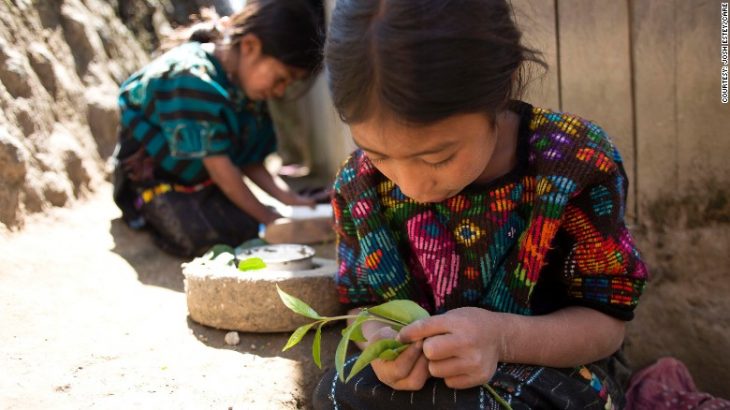Food insecurity has plagued Mexico throughout the country’s history, and the issue of hunger in Mexico has drawn attention from many of its past presidents. With a recent increase spike in the number of food-insecure households, President Enrique Peña Nieto and organizations such as The Hunger Project have developed targeted strategies to achieve food security for all Mexicans.
Hunger in Mexico: The Facts
At least 10 percent of the population in every Mexican state suffers from inadequate food access. In nine states, the percent of those living in food-insecure households reaches between 25 and 35 percent. Further, more than 10 percent of residents in seven Mexican states are categorized as being seriously food insecure.
Food access is the problem, not food availability. Between 2003 and 2005, Mexican food supply averaged 3,270 kilo-calories per day, well above the minimum requirements of 1,850 kilo-calories per day. Thus, the food supply was sufficient to support the Mexican population. However, as previously stated, at least 10 percent of the Mexican population in all regions suffers from inadequate food access. This data suggests that the way to end hunger in Mexico is by increasing access to nutritious food rather than increasing food production or food imports to Mexico.
In 2008, 18.2 percent of Mexican residents lived in food poverty. Food poverty is defined as not earning sufficient income to purchase nutritious food, even if the total income is used. In 2006, 13.8 percent of the Mexican population lived in food poverty. By 2008, this number had increased by 4.4 percent.
Food insecurity negatively affects the Mexican economy and development. Malnutrition inhibits economic growth as it reduces the population’s productivity. A World Bank study determined that Mexico loses up to 250 billion pesos — or $19 billion — annually as a result of food insecurity.
Various factors can have a significant influence on a family’s level of food security and food access, including one’s educational level. Households headed by a person with an elementary education are 8.2 percent more likely to be food secure than a household headed by a person with no formal education. This percentage increases to 20.2 when the head of household has obtained a high school education. Knowledge of a native language also plays a determining role in food access. Households where at least one resident speaks a native language is 5.6 percent less likely to be food insecure. However, the increased likelihood of food insecurity among indigenous groups is also present among the rural, low income sub-population group.
Hunger in Mexico: The Response
With 52 million Mexicans facing hunger and seven million living in extreme poverty, President Enrique Peña Nieto launched La Cruzada Nacional Contra el Hambre (the National Crusade Against Hunger) on January 21, 2013.
The national campaign called for cooperation between the Ministries of Social Development, Education and Defense to implement a successful anti-poverty and hunger program in 400 of Mexico’s poorest municipalities. The crusade consists of five main objectives:
- Eliminate hunger through adequate food and nutrition for those living in extreme poverty and those with a lack of access to food.
- Eradicate acute childhood malnutrition and improve childhood weight/size standards and averages.
- Increase food production and income of peasant farmers and small-scale producers.
- Minimize post-harvest food loss during storage, transport, distribution and sale.
- Promote community participation toward the eradication of hunger.
President Peña Nieto describes the crusade as an “integrated strategy of inclusion and social well-being” that will help alleviate food insecurity and strengthen Mexico’s economic and social development.
The Hunger Project (THP), a global non-profit organization committed to the sustainable end of hunger, has also taken on the fight to promote food security in Mexico. THP’s innovate approach in Mexico targets specific areas to minimize hunger: clean water, nutrition, education, women’s empowerment, the environment, income generation, health, community mobilization, food sovereignty and maternal health.
THP is a grassroots mission that mobilizes people on-the-ground, encourages the empowerment of women, and forces partnerships with the local government. With programs in four states (Chiapas, Oaxaca, San Luis Potosí and Zacatecas), THP has reduced hunger in Mexico by empowering women to be catalysts of change, assisting local farmers and residents in creating sustainable agriculture and helping to improve access to clean water and sanitation.
Hunger in Mexico is preventing 47 million impoverished persons from rising out of poverty and is a major roadblock in Mexico’s path towards development. But with dedicated, effective programs such as the National Crusade and THP, sustainable and widespread food security can be achieved in Mexico.
Source: Anna O´Toole.



